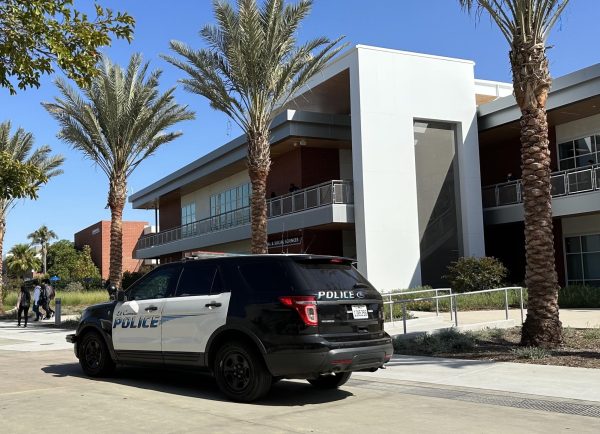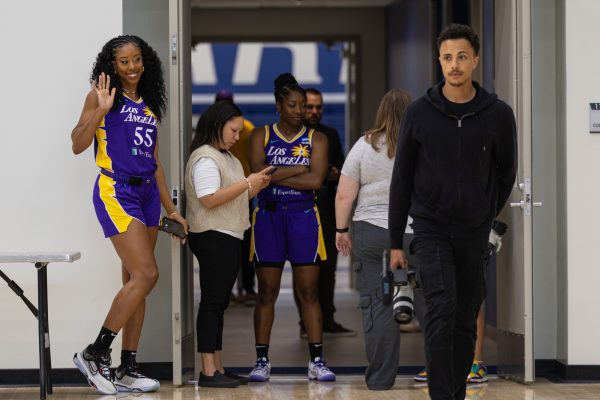Free mammograms coming soon
Millions of women have escaped death from it, but this year more than 40,000 aren’t expected to escape its clutch. It is an affliction that has united people from all over the world to combat it, including people at EC. Their month is October, their color is pink, and their disease is breast cancer.
To help catch breast cancer before it becomes fatal, the EC nursing department will offer free mammography screening Thursday and Friday, at the EC nursing department from 9 a.m. to 6 p.m.
Those who participate will also receive a ticket redeemable for a free manicure from the cosmetology department.
“The amount of work and effort that goes into organizing the free mammography day at EC is worth all the labor, even if only one life is saved,” Jan Ball, coordinator of the free mammography event, said.
“Last year we screened sixty-nine women and seven had to make follow up appointments.”
In previous years, free screenings were available on only one day, which didn’t allow for everybody who wanted a mammogram to be screened.
“Last year, we had such a big response that we added a second day,” coordinator of student health services Debbie Conover said.
Appointments may be made in advance at information tables, marked by pink balloons, Monday through Thursday. For efficiency purposes, the two days available for free mammograms will be split.
Wednesday Oct. 20 will be reserved for faculty members and appointments, while Thursday Oct. 21 is the day for community members, students and walk-ins.
“Radiology, sociology and nursing students have also generously volunteered their time and services.”
2004 marks 20 years that National Breast Cancer Awareness Month has been educating and promoting awareness of breast cancer in women every October.
“I think the point of (breast cancer awareness month) is to inform every woman that they should be screened…it’s a yearly reminder,” Dr. Herman Kattlove, an oncologist associated with the American Cancer Society, said.
Kattlove said mammograms are designed to find breast cancer in women at its earliest stage, and work best for women over the age of 50.
For those with a history of breast cancer in their family, Katlove says that MRI’s are recommended, although they can be expensive and time consuming.
Statistics given by Kattlove show that mammograms reduce the mortality rate by approximately 30 percent for women ages 50-69. The mortality rate is higher for women ages 40-49 who get screened, reducing the mortality rate by only approximately 15 percent.
“Every month should be Breast Cancer Awareness Month every day of the year, not just in October,” Kattlove said.
Although there is no agreement on the amount of time that should pass between mammograms, many doctors including Kattlove recommend at least every two years, especially for older women.
Jolena Urioste, a student at EC, had a grandmother who survived breast cancer and now gets screened regularly three times a year.
“I’m glad that there is a whole month dedicated to breast cancer,” Urioste, said. “A lot of women who don’t think they could have cancer decide to go and get checked…I encourage all my friends to get checked out, regardless of family history,” she said.
Ball, who is coordinating the free mammograms, is a breast cancer survivor herself, and is committed to promoting awareness of cancer detection and treatment to other women.
“When you’re part of a survivors group, you’re so thankful. I want to help other women and the population in general become more aware how important early detection is.”
Women may also make appointments at the Los Angeles Elizabeth Center of Cancer Detection, at (213) 481-2511. It will be participating on Oct. 15, the official National Mammography Day.
Breast cancer is one of the most common forms of cancer a woman may face in her lifetime; however,when detected early, the cancer can be isolated in the breast and increase the chances of survival to 95 percent.
“Early detection is the key to extending life for women. Not all women can afford to get screened, we want to make it possible for as many women as we can,” Ball said.
Early warning signs include finding an abnormal lump in the breast, abnormal thickening of the tissue, dimpling or discoloration of the skin or nipple, soreness or steady itch, an inverted nipple, and abnormal discharge from the nipple.
“It doesn’t matter what age you are; you’re either doing prevention or treatment.” Ball said. “Students should make sure, if they have older relatives, to encourage them to get mammograms and to learn how to do self-checks.”
Women in their 20s and 30s should perform self-exams every month and schedule clinical examinations every three years, while women 40 and older should schedule exams once every year and mammograms every one to two years.
The American Cancer Society has representatives who may be reached at (800) 227-2345 at any hour and day of the week to assist persons with breast cancer concerns and answer any questions. Another resource is the National Breast Cancer Awareness Month website, at www.nbcam.com.
“Women need to have a starting point,” Ball said. “Don’t be frightened; keep track of your health and go in and get taken care of.”
Breast Cancer Facts
Breast cancer is the most frequently diagnosed cancer in
U.S. women, with 211,300 invasive cases expected in 2003.
It accounts for nearly one out of three cancers diagnosed in
U.S. women.
It is is the second leading cause of cancer death in U.S.
women; 39,800 deaths are expected in 2003, with an addi-
tional 1,300 deaths among U.S. men.
The incidence and deaths from breast cancer increase with
age. 94 percent of new cases and 96 percent of breast can
cer deaths reported from 1996-2000 occurred in women ages
40 and older.
Women with a history of breast cancer, especially in a first-
degree relative, have an increased risk of developing breast
cancer themselves.
At this time, there is no guaranteed way to prevent breast
cancer, which is why regular mammograms are so important.
A recent large American Cancer Society study showed that
overweight women are 60 percent more likely to die of breast
cancer compared to normal weight women.
Source: American Cancer Society Breast Cancer Facts and Figures 2003-2004









